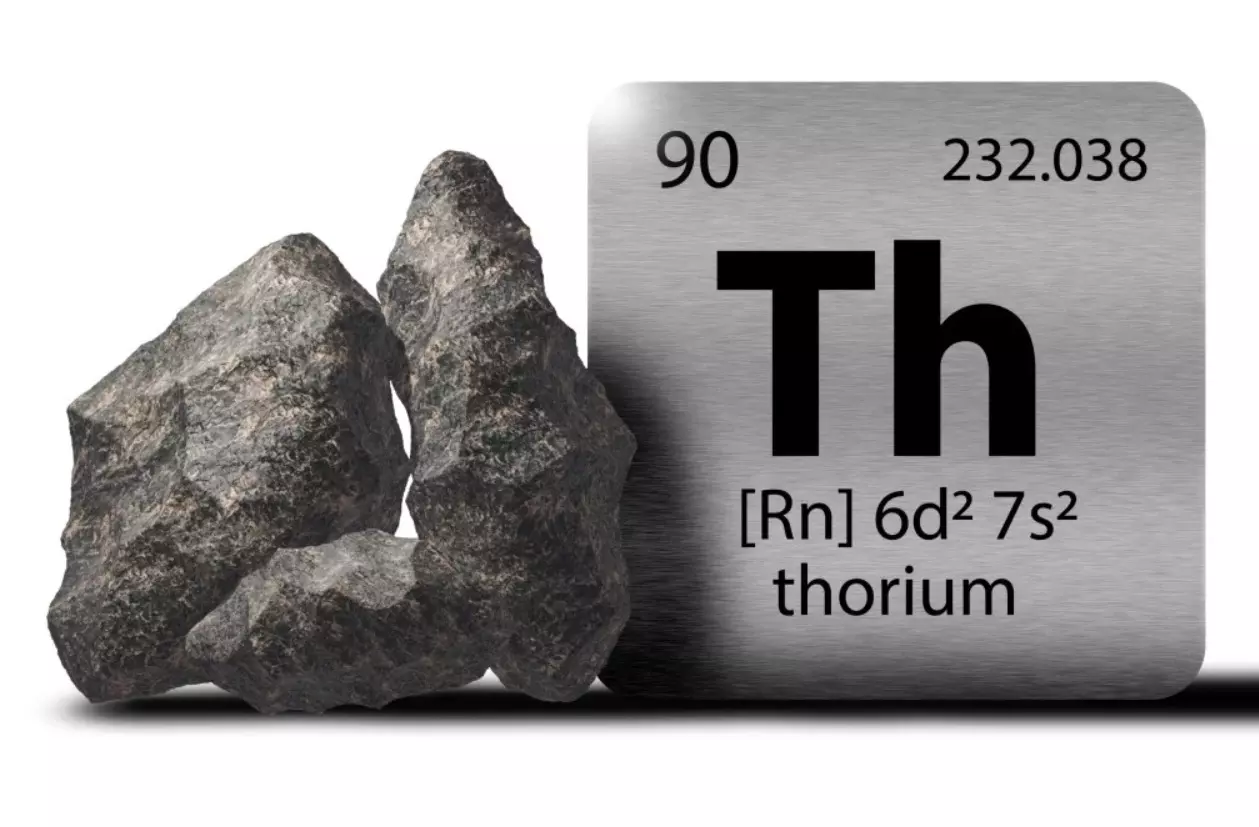Thorium and the New Nuclear Age
China is planning the world’s first molten salt thorium reactor — a potential 60,000-year limitless energy breakthrough transforming global nuclear technology

China’s discovery of a limitless energy source, thorium, could mark a turning point in global nuclear technology. The breakthrough, made at the Bayan Obo mining complex, revealed an extraordinary 1 million tonnes of thorium, a resource that may supply China’s energy needs for an astounding 60,000 years. This discovery not only promises to revolutionise sustainable energy but also comes at a time when the nation is aggressively exploring innovative solutions to meet rising global energy demands.
At the heart of this development is an extensive geological survey that has mapped 233 thorium-rich zones across the country. Such comprehensive mapping, supported by standards like understanding the JORC code, a key to informed mining investments, demonstrates the systematic approach to harnessing a resource that has the potential to transform the energy sector. With the primary keyword echoed throughout, it is clear that as China discovers a limitless energy source, thorium, experts worldwide are paying close attention to this pioneering find.
Thorium, a naturally occurring radioactive element, has long been eyed as a promising alternative to traditional uranium for nuclear reactors. Unlike uranium, thorium offers a much denser energy yield – experts estimate it contains up to 500 times more energy potential than conventional uranium-232. The implications of this finding are immense. If harnessed efficiently, thorium could deliver a cleaner, safer, and more sustainable form of nuclear energy that produces significantly less toxic waste.
Experts say the reactors are “inherently safer” than traditional nuclear reactors and have other advantages, but scientists have long struggled with challenges such as the corrosive nature of the superheated radioactive salts.
Construction on the research facility is due to start next year, with operation expected in 2030, followed by full-scale production.
China is planning to build a nuclear power plant on the edge of the Gobi Desert that would be the first in the world to use molten salt as the fuel carrier and coolant.
It would also be the first to use the radioactive metallic element thorium — named after the Norse god — as a fuel source instead of the uranium traditionally used in nuclear reactors.
Plans for the thorium molten salt reactor (TMSR) were detailed in an environmental assessment report that was briefly posted to the website of the Shanghai Institute of Applied Physics (SINAP) before being taken down.
According to the report, a prototype TMSR at the same location, which was designed to produce 2 megawatts of thermal energy but no actual electricity, achieved criticality in October last year. Building on the results of the prototype, the new facility will produce 60MW of heat that will be used to generate 10MW of electricity and hydrogen as part of a larger renewable and low-carbon energy research hub.
The project would “drive the development of a large number of materials and high-end equipment manufacturing technologies,” the report said. It cited advantages to molten salt reactors, including “high inherent safety, low nuclear waste, physical prevention of nuclear proliferation, and better economics”. It also mentioned that because TMSRs don’t require water, they could also be built underground and in arid areas.
Construction is due to start near Wuwei in China’s northern Gansu Province next year, with full operation expected in 2030. The project is part of China’s campaign to become carbon neutral by 2060, which has seen Beijing funding research into a wide variety of low-carbon energy technologies, including new types of large nuclear reactors and small modular reactors (SMRs).
According to a paper previously published in the Chinese scientific journal Nuclear Techniques by SINAP, China aims to begin producing 100MW TMSRs from 2030. The reactors would be used for traditional civilian energy purposes, but some have suggested they could also be used to power military ships, aircraft, and even drones.
A Chinese shipyard last year revealed designs for a huge nuclear-powered container ship that would use a small TMSR. Traditional water-cooled reactors have to operate at high pressures so the water doesn’t turn into steam — like huge pressure cookers. Molten salt vaporises at much higher temperatures, so the reactors don’t need to be pressurised in the same way. They also include a “frozen” salt plug designed to melt if the system overheats or loses power, allowing the molten salt to drain into a reservoir where it cools down and solidifies — stopping the nuclear reaction.
Experts say this means there is less danger of them having a catastrophic meltdown like at Fukushima and Chernobyl. Australian Nuclear Association president Mark Ho has been quoted as saying that because molten salt reactors do not need to be pressurised, they could be smaller than water-cooled reactors.
Dr Ho said China could provide these “miniaturised” nuclear reactors to Pacific Islands nations, where diesel generators provide most of the electricity. “An unpressurised core [also] means an inherently safer design,” Dr Ho said. He said the initial success of China’s molten salt reactor programme showed how far behind Australia was on advanced nuclear power technology.
Thorium, meanwhile, has some potential advantages as a fuel over uranium, as it is able to produce shorter-lived radioactive waste and is more difficult to use for nuclear weapons. It is also much more abundant than uranium, particularly in China.
According to the SINAP report, China’s proven thorium industrial reserves are about 280,000 tonnes — second only to India’s, which are about 340,000 tonnes. That’s said to be enough to satisfy China’s energy needs for 20,000 years. The news has generated excitement in the scientific community because it suggests the Chinese researchers have had at least some success in overcoming the technical challenges that have made TMSRs unviable in the past. They include the corrosive nature of the radioactive superheated salts and the difficulties involved in achieving fission with thorium, which is fertile rather than fissile. Thorium needs to be irradiated, turning it into uranium-233, which is a fissile material that can be burned in nuclear reactors.
Nuclear engineer Tony Irwin, an honorary associate professor at the Australian National University, said the TMSR was an “interesting technology that’s got a lot of potential”.
He has been quoted as pointing out that the higher operating temperature could also be used to supply process heat for industrial applications. “[Chinese researchers] tend to go in very conservative steps,” he said. “Start off slowly and demonstrate, and then carry on for the next one.” He said the big challenge remained ensuring the plant would last for the expected 60-year lifetime of a commercial power plant.
US scientists first started looking into molten salt reactors in the 1940s, hoping they could be built small enough to be installed in aircraft. A functioning TMSR was built at the Oak Ridge laboratory in Tennessee, but it endured a series of issues and malfunctions and was shut down in 1969, with thorium effectively abandoned in favour of uranium. The 2MW TMSR built in the Gobi Desert was the first to achieve sustained fission since then. China’s researchers are not the only ones who have been working on the technology in recent years.
India, which has the world’s largest known reserves, has long been trying to develop thorium as a power source, while Indonesia and other countries have expressed interest in TMSRs as well.
A number of private companies are also jostling to be the first to get a commercial thorium-powered and/or molten salt reactor up and running. They include Bill Gates’ TerraPower, which is planning to build a 345MW molten chloride salt-cooled reactor in Wyoming that would run on high-assay low-enriched uranium. However, not everyone believes in the potential of TMSRs.
Researchers have raised concerns that waste from SMRs, including molten salt reactors, may be more harmful and difficult to dispose of than that from traditional nuclear reactors. “Should molten salt reactors ever be constructed, they are unlikely to operate reliably,” physicist MV Ramana wrote in Bulletin of the Atomic Scientists. “And if they are deployed, they would likely result in various safety and security risks. And they would produce several different waste streams, all of which would require extensive processing and would face disposal-related challenges,” he added.
One of the foremost challenges lies in the extraction and processing of thorium. The complex nature of mining and refining thorium requires state-of-the-art technology and significant capital investment. Economic feasibility, along with ensuring environmental sustainability, remains a crucial concern. In this context, modern research points out that effective resource management must consider the intricate details of mining’s crucial and paradoxical role in the clean energy transition.



